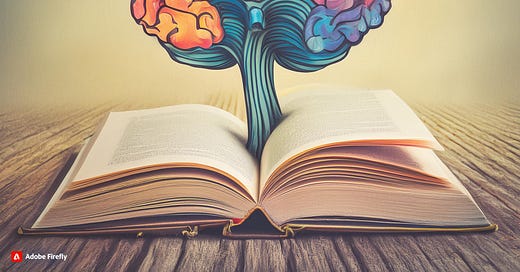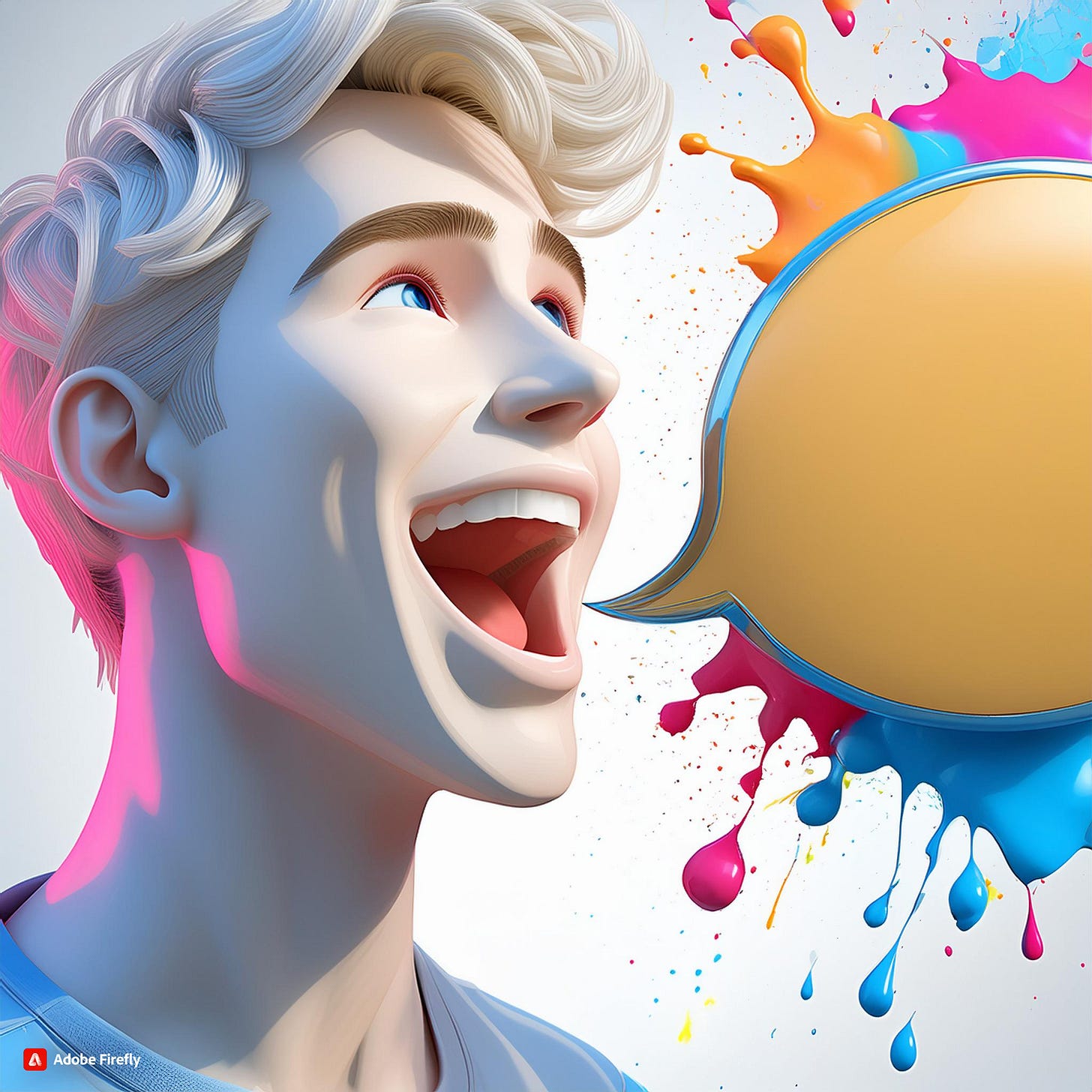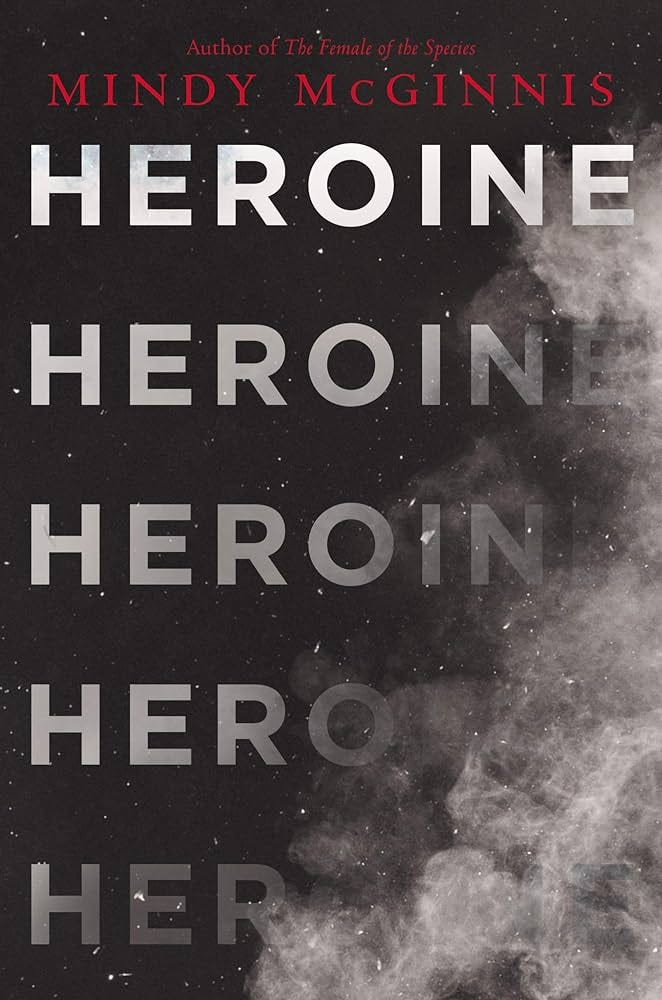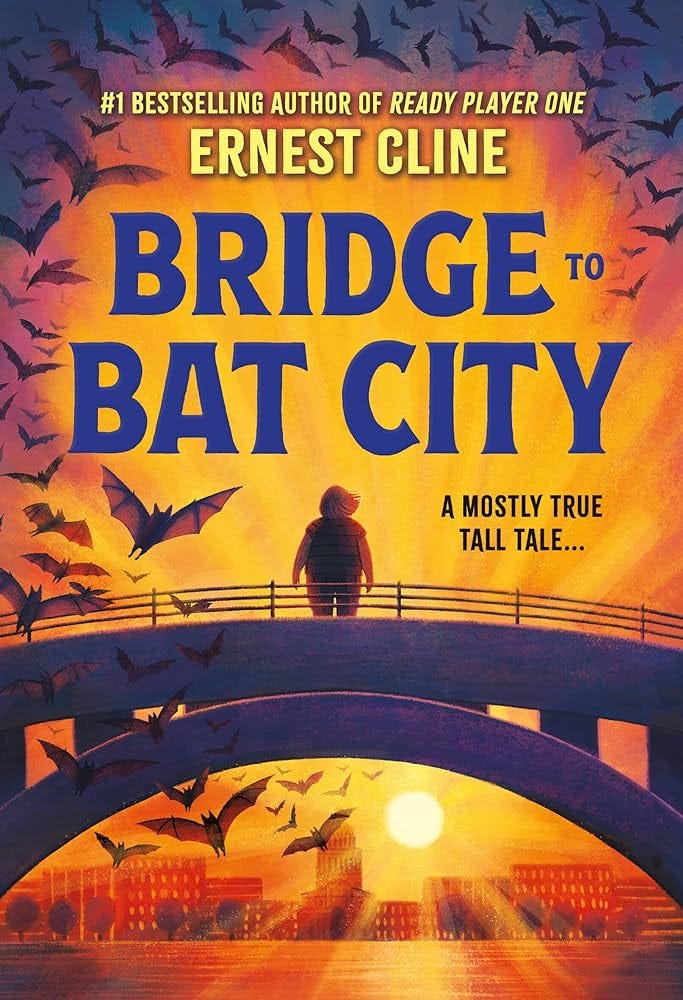Tripping and Falling Into ADHD
About a year ago, TikTok started showing me ADHD content, which I thought was a fluke because the algorithm also sometimes mistakenly thinks that I’m politically conservative and deeply into country music. But the ADHD content was different. The way these creators were talking about themselves and how they functioned on a daily basis got my Spidey Sense tingling. I did some further reading and started keeping a list of behaviors and symptoms that applied to me. When that list topped forty items, I talked to my therapist about it, and then I talked to my doctor about it.
About three weeks ago, I was prescribed medication for ADHD for the first time at age 41. And yeah, it works. It works a LOT.
In general, when it comes to writing and editing, I kinda think ADHD is a superpower. The ability to hold a bajillion different things in my head at once is the only way I can imagine accomplishing a project as big and complicated as a novel. Also, my hyperfocus in areas of deep interest allows me to work quickly and effectively when writing my own books or helping other people write and revise theirs.
But personally, a lot of the dopamine-seeking behaviors I’ve always battled have virtually disappeared since starting the medication. Mindless social media scrolling is WAY down (my social media usage numbers are actually down across the board), I’ve been able to stop binge eating, and I’ve all but eliminated my reckless online shopping habits (for no good reason, I typically buy a new ball cap every few weeks, and don’t get me started on my 1980s toy collecting—Ebay has gotta be down bad with me off the app these past few weeks).
Squashing all that stuff has made me more productive by default. It’s also allowed me to feel less anxious, more patient, and more present. I may still forget whether I’ve shampooed my hair thirty seconds after shampooing it, and I definitely still finish people’s sentences for them if they aren’t getting to the point quickly enough. I also still talk too much and struggle to wait my turn in a conversation. But man, I do feel so much better. The constant chattering ensemble in my brain has thinned out, and I’m now able to start and finish tasks in a sitting without breaking thirty times to keep myself from getting bored.
I’m going to call that progress. Is it weird to be diagnosed this late in my life? Sorta, yeah. But better to figure it out at the halfway point than never at all. I’ve learned that many artists and writers are neurodivergent, so if anything, this just solidifies my membership in this club of wonderful and creative people!
RevPit Rundown
I know I’ve got plenty of subscribers who are here because of something RevPit-related, and since we’re past the most anxiety-inducing and/or exciting parts of the process for 2024, I thought I’d talk a little about what I saw in my submissions this year, and why I ended up choosing the book that I did.
The first thing I’ll say is that my ultimate winner’s logline jumped out at me upon my first read-through of submissions. I didn’t do this for every sub, but for hers, I immediately opened the query package and fell in love with everything. I was hoping the book was going to have enough for me to fix, but I didn’t have time to dig that far into it at first, so I green-flagged it and read the rest of my subs in search of a few books to try reading more thoroughly, my eventual winner among the three I settled upon first.
So to be completely transparent, I had a good feeling about the book I chose from the jump. Last year, I had about three books that were all more or less equal, and it took a lot of thought and pro/con lists to pick the one I thought I could most help. This year, I was almost looking for something to dissuade me from choosing what I chose. There were three or four books that came close, but it ultimately never happened. My winner was my winner, as I had a pretty good idea she would be early in the process.
For everyone else, I read every single logline in that first round and marked over a third of my submissions as “maybe.” I’m not kidding when I say there were about ten with concepts that absolutely knocked my socks off. I couldn’t believe how good they were! Some had awesome query materials (and those got green-flagged), but some just weren’t at a place where I felt equipped to help in the short time frame.
What do I mean by that? Deciding against a book could’ve come from one of a few things:
The manuscript was REALLY raw. While it’s one of my favorite things in the world to help new (or new-ish) writers level-up and make steady progress toward their goal of publication, RevPit for me is more about finding a book that’s been through a few rounds of serious revisions. So if I was looking at a writer who just needed more work than we could get done in a month, I would pass.
If the voice in the opening pages wasn’t resonating with me at all, I didn’t pick it. As a developmental editor, I can help a writer fix plots and story beats and character arcs, but I can’t really teach voice. So I was looking for something with a strong character voice (or voices) already established.
I liked it, but I felt like I was maybe going to ask for a full teardown and re-write. Even if a book needs that, I couldn’t invest the requisite energy into helping a writer start over from scratch.
I didn’t have many super-long books, but there were a few that I liked with word counts over 120/130k. For the time frame, this felt too long for me, especially if they were in genres where the word count was clearly too high). Maybe this sounds awful, but because I’m working for free, I gravitated toward books that were under 100k.
After all of that narrowing down, I had about eight books that felt really, really promising. I picked three at random to just read with an open mind, and I read ‘em. My winner was among that first batch, and by the time I was done I had two very clear and reasonable directions for the book in specific areas, and I knew that was going to be it. I knew my winner early in the process.
Choosing a runner-up was MUCH harder. For the other five books I hadn’t read yet, I decided to peruse until I lost interest and to see 1.) which one held me the longest and 2.) if any of them struck me more than the ones I’d just read in full.
My runner-up came from that second batch of five. The voice and tension and suspense were all so good that I felt the writer would benefit from those runner-up prizes.
Y’all—it BREAKS MY HEART to tell people no. I got into this business to help writers grow and inch closer to their publication dreams. The beauty of my role in the process is that I am a just cheerleader, a mentor, a builder, a questioner, and maybe even a friend. But I am NOT used to being the gatekeeper. It’s heartbreaking to know that people were feeling disappointed because of a decision I made, but ultimately, I participated in this contest to help people, to connect with the writing community, and to have a little fun. I accomplished all of those things this year, and I’m looking forward to seeing how my winner tackles her edit letter (she got it earlier this week!).
As stressful as RevPit season is, I love it more every year. Can’t wait for 2025!
Tips for Giving Characters Distinct Voices
One thing I see a lot while editing is characters who all think, sound, and behave like the narrator (who just so happens to sound an awwwwful lot like the author). For characters to feel real, we need to make sure they have distinct voices, so these tips are designed to help you make sure that happens:
Education & Social Background - Speech patterns are a great way to make two voices distinct, especially in a book with multiple points of view. I once wrote a book about a princess and a peasant who had to work together to save the kingdom. The princess spoke very properly (she never uses contractions in the whole text) and with a big vocabulary. The peasant had a smaller vocabulary, used the wrong words for things, and spoke in almost nothing but contractions. This kind of thing is an easy way to make your characters’ voices distinct.
Verbal Tics & Catchphrases - While you don’t want to overdo it, giving a character a crutch word or catchphrase is a great way to help them stand out in the text. You could have a know-it-all character who pushes up his glasses and starts a lot of sentences with “Actually…” any time someone other than him has a solution for something. Maybe there’s a teenage character who uses the word “like” a lot. Maybe they’ve got a little catchphrase they learned from their mother that they always say whenever they’re exasperated. Have fun with this, but make sure you don’t hammer those quirks to death. You don’t want readers to get tired of them. (My high school students are usually ready to strangle Jay Gatsby the third or fourth time he uses the expression “Old Sport.”)
Dialects & Accents - Be careful to avoid offensive stereotypes, but if you’ve got a character who is, for example, from certain parts of the American South, they might drop the “g” off of -ing verbs. Or maybe they’re the only person in the book who calls soda “pop” (or “Coke,” if they’re from Georgia).
Internal Thoughts & Personalities - What a character thinks about themselves can inform how they speak. A shy person will have a different voice from an arrogant person. The youngest child of a family of seven might either be silent because they’ve always faded into the background, or loud as heck because it was the only way they could ever be heard. Someone experiencing depression may speak differently from someone who is manic (think about Eeyore and Tigger having a conversation together!). Let those thoughts and personality archetypes inform how they speak!
Diverse Voices - While diverse voices and representation are important, I’m talking about ensuring you’ve got a wide range of thoughts, experiences, and opinions for your cast of characters. I always use The Office to illustrate this: You’ve got Michael( an idiot who doesn’t know he’s an idiot), Dwight (an authoritative know-it-all), Pam (mousy), Jim (playful), Ryan (shameless), Andy (gregarious as a coverup for his anger), Stanley (lethargic), Kevin (dumb), Angela (holier-than-thou), Oscar (brainy and conceited), and so many more. Mixing together different kinds of people allows them to express themselves in different ways (particularly when paired up in different combinations throughout the book). One way to ensure a variety of character voices is to have a variety of characters!
Evolution of Voice - One interesting thing you can do is show how a character’s voice changes over the course of the book. It’s an extreme example, but think of Bella in Poor Things. She burbles like a baby in the beginning and is speaking brilliantly by the end. How could you show character growth by evolving their voice over the course of the book?
If you can do all of this, you’ll have characters who stand out and feel real and differ enough from your own voice and beliefs that readers are really able to buy in. You don’t want them all to be just an iteration of you. Use some of these tips to make sure that doesn’t happen!
What I’ve Been Reading
James, by Percival Everett
I’ve heard The Adventures of Huckleberry Finn referred to as “The Great American Novel,” but I really don’t like the book. Twain originally intended it to follow Huck from childhood into adulthood, but he got so bored with his own damn manuscript that he stopped writing it for years. When he finally picked it back up to finish, he gave it one of the laziest, most garbage endings in the history of American Literature.
All of this is to say that James, a Huck Finn retelling told from Jim’s point of view, might be my favorite book of 2024 so far. If you want to talk about character voices, this book does things with dialogue and dialect that are immeasurably creative and so perfect for these characters and this story. And the story itself splits from Twain’s timeline about halfway through, with a Tarantino ending that is badass but also emotionally impactful and thematically perfect. It’s an incredible journey that sticks the landing.
Heroine, by Mindy McGinnis
Softball season is underway (I’m helping to coach both of my daughters’ teams this summer—pray for me!), so I thought I’d read a highly-reviewed softball book. This one mixes highly competitive high school sports with the opiate crisis, and what I loved most about it was the main character’s gradual descent into the darkness of addiction. It’s a great example of what happens when an author allows the main character to make decisions that have consequences, which lead to more decisions and then more consequences and so on. The reader can feel the negative momentum mounting, and there’s no stopping it. It’s a perfectly crafted YA book.
Bridge to Bat City, by Ernest Cline
I loved Ready Player One, despite its faults. Ready Player Two was also fun, and I had a great time with Cline’s Armada, too. But this one? I’m not sure what happened other than to guess that Cline is writing with enough clout now that editors are no longer muscling him into good story choices. I suppose the publisher thinks he can write whatever he wants now and it’ll sell, but this—Cline’s first MG book—is not something I’d recommend picking up. It’s bad, friends. Really bad.
From the outset, the book has an identity crisis. The opening chapter makes it sound like it’ll be a nonfiction book about bats (I had to reread the product description to make sure I didn’t misunderstand what the book was about), and then Chapter 2 is a full-blown info-dump with nothing but backstory. The sci-fi twist comes out of nowhere and is completely unnecessary, and the pacing of the book is atrocious. It’s unreadable. I don’t give books below three stars on Goodreads often, but I did for this one. I guess I’ll keep my fingers crossed that he writes a Ready Player Three and totally redeems himself.
Thanks for reading! If you’re new here, don’t forget to subscribe, and please share with any other writer buddies you think may benefit.
Hugs and high fives,
-JB







![James: A Novel [Book] James: A Novel [Book]](https://substackcdn.com/image/fetch/$s_!1QbX!,w_1456,c_limit,f_auto,q_auto:good,fl_progressive:steep/https%3A%2F%2Fsubstack-post-media.s3.amazonaws.com%2Fpublic%2Fimages%2F82e1a80e-2e3e-4ea9-ac60-8ba32d80fd8d_298x450.jpeg)


Thank you for sharing your health diagnosis and yes, better late than never. I got diagnosed with bipolar disorder well into adulthood too, and then with ASD a few years later. After the initial shock, these diagnoses were in fact incredibly helpful for me to make sense of my many, ahem, *quirks*, and how to deal with them and turn them into as many strengths as possible.
Loved reading about your revpit process too! I participated for the first time this year and enjoyed every minute of it (yes, even the stress inducing waiting). Thank you for all the work you put into it.